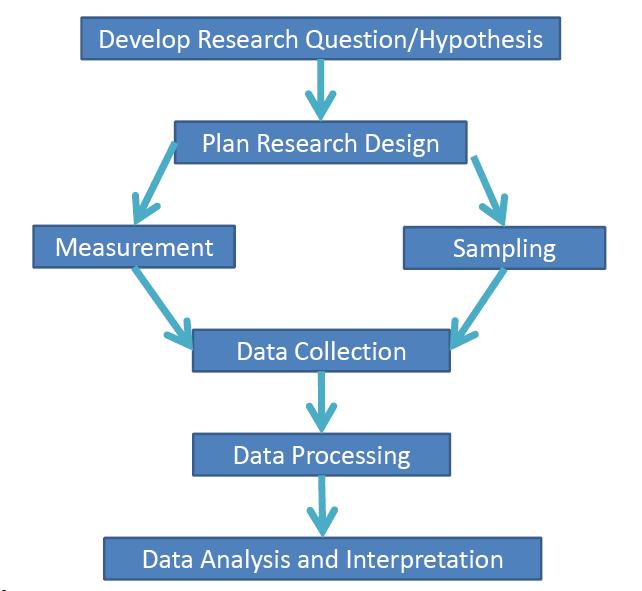
Adapted from Singleton & Straits (2010)

Adapted from Singleton & Straits (2010)
According to the research process, after the research questions and hypotheses have been set and the research design has been identified, then the researcher needs to consider two further aspects of the research process:
This chapter will begin the process that will identify the sample.
The unit of analysis is the entity under study, or who is being described or analyzed. This may include such entities as individual people (e.g., pupils), groups of people (e.g., a classroom), or organizations (e.g., school). Identifying the unit of analysis may seem like an obvious step, but it is oftentimes overlooked in educational research studies. For example, a researcher may ask a research question about students' academic achievement, but then a questionnaire is given to teachers! For research to be valid, the sample must match the unit of analysis.
In most research studies, the unit of analysis will be an individual: pupils, teachers, administrators, parents, etc. In most of these studies, the very individuals identified as the unit of analysis must be the ones who comprise the sample. (A few exceptions are made when the unit of analysis cannot make an accurate report on the key variables. For example, imagine a study examining the social development of children ages 3 to 6. Young children cannot complete a questionnaire about their social development, so a person familiar with the child such as a parent might give information about their observation of the child.) A few studies might have units of analysis that reflect various parts of an institution, such as a school. An example would be a research study that wants to identify the typical number of books in public school libraries. In this instance, the unit of analysis would be the library. When a research study is examining something that is not an individual, then the researcher must carefully consider who can most accurately report on the unit of analysis - perhaps a librarian or the principal.
For the following research purposes listed below, identify the unit of analysis.
After identifying the unit of analysis, then the researcher must identify the target population, the group of people that the researcher wants to draw a conclusion about once the research study is finished. Identifying the target population requires specifying the criteria that determines which individuals are included and which individuals are not included. In other words, what characteristics must an individual have to be included in the target population? The researcher might consider the following characteristics for an educational research study:
For a study examining the effects of computerized instruction on math skills, will both males and females be included? What age of students will be targeted: primary, secondary, or university? Will students in public or private schools be included? Will the study focus only on urban students, or will students from the rural areas also be included? Will students be disqualified for any reason - perhaps those who do not have computer skills?
Once the target population has been identified, then the researcher needs to select individuals from the target population to be part of the sample that participates in the research study, the topic of the next step.
Return to Educational Research Steps
Copyright 2012, Katrina A. Korb, All Rights Reserved